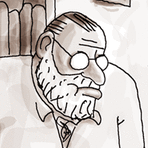Tom Krasovic: Rickey Henderson turbocharged Padres' offense during 2 stints with club
Published in Baseball
SAN DIEGO — Rickey Henderson was at his incandescent best when playing for the Oakland A’s and New York Yankees.
His two tenures with the Padres, though, deserve more than a footnote to his Hall of Fame career and standing as the sport’s best leadoff hitter.
Though well past his prime, Henderson infused his rare jump-starting voltage into Padres teams in 1996, 1997 and 2001 by reaching base and stealing bases at a high rate.
He was vital to San Diego winning the franchise’s second divisional title in 1996, back when new team ownership said postseason berths were needed for the franchise to get public money toward a downtown ballpark.
Then 37 years old, Henderson led the ’96 Padres in on-base rate (.410), walks (125) and stolen bases (37). Only Steve Finley scored more runs than his 110. Fans loved his flair, furthering the franchise’s revival from MLB’s infuriating work stoppage in 1994. Locals got a taste of the former longtime American Leaguer’s famed “Rickey runs” — a single or walk, followed by a stolen base or two and a sprint home on a hit or a productive out.
When he returned to the Padres at 41, Henderson — who died Friday at age 65 — proved he could still put his stamp on a game.
The leadoff man logged 100-plus games in left field, stole 25 bases and mustered a .366 on-base rate on a modest $300,000 salary. He got his 3,000th hit in Mission Valley and became baseball’s career leader in walks and runs scored while wearing Padres navy blue.
San Diegans saw up close that Henderson aged better than most ballplayers, even many of the great ones.
It took more than rare athletic gifts, he said, to withstand baseball’s rigors.
Henderson cited his disciplined health habits off the field, and in particular, one activity familiar to all non-athletes.
“Sleep,” Henderson told me when I asked what factors contributed to his enduring career.
When he touted the merits of making sure to get plenty of zzzzs, Henderson brought to mind lifestyle pointers stated often by another folksy Hall of Famer whose durability astonished even fellow baseball greats.
“Avoid fried meats which angry up the blood,” counseled Satchel Paige in interviews and his autobiography.
The Padres' Rickey Henderson celebrates after setting baseball's all-time runs scored record in 2001.
The Padres’ Rickey Henderson celebrates after setting baseball’s all-time runs scored record in 2001.
Paige was not the devotee of consistent sleep Henderson was. He enjoyed the nightlife. But the loose-armed pitcher said many late-night hours spent dancing enhanced his leg strength and, in turn, his athletic durability.
Considering Paige also advised “avoid running at all times” and was 42 when he retired the only two hitters he faced in the 1948 World Series, who are we to argue with the benefits of cutting a rug?
While his Padres teammates and other big-leaguers were bulking up, Henderson touted an iron-free fitness regime that kept him in fighting trim at 5-foot-10 and 180 pounds.
Rather than lift weights, he leveraged his body weight to keep himself strong and limber.
Push-ups. Sit-ups. Chin-ups. Dips. He cranked them out on most days, he said.
Henderson surely heard about the reputed performance-enhancing benefits of anabolic steroids used by some ballplayers, including Padres teammate Ken Caminiti, the National League’s unanimous MVP in 1996.
Henderson told me he tried the legal weight-training supplement creatine — once. He said the subsequent workout left him swollen, creating a “pin-prickling” sensation in his bulging forearms.
It scared him. He said he never again used creatine, a legal non-steroid that Caminiti himself said he “abused” during his MVP-winning season while coping with a shoulder injury that would require surgery.
Henderson retained enough quickness, power, flexibility and hand-eye skill to play in the big leagues for 25 years, retiring when he was 43. The Dodgers were the final big-league team to employ him.
Henderson’s body withstood a punishing style of play to an astonishing degree. No one scored more runs or stole more bases. The only player to play more games in left field was Barry Bonds, who hasn’t been elected to baseball’s Hall of Fame because too many voters believe he took steroids late in his career. With 3,081 games played, Henderson stands behind only Pete Rose, Carl Yastrzemski and Henry Aaron.
If there are numerical markers that will be forever linked to Henderson, three must be considered:
— 24: The jersey number he wore in most seasons, popularized before him by center fielder Willie Mays;
— 130: Henderson’s stolen base total in 1982 that broke the MLB season record of Lou Brock, the durable Cardinals Hall of Famer who stands seventh in games played in the outfield;
— 401: Henderson’s career on-base rate, a refutation of the overstated claim that even the best hitters fail seven out of every 10 chances.
A ballplayer’s appetite for baseball isn’t so easy to quantify.
Baseball, in fact, wasn’t Henderson’s favorite sport in his youth. Football was. Only because his mother asked him to stick with baseball, a sport that Tony Gwynn’s mother championed when Gwynn was a basketball standout, did Henderson forgo a football career as a running back. Otherwise, he said he would’ve probably attended Arizona State, one of many schools that offered him a scholarship after scouting him at Oakland Technical High School.
Henderson’s mother was proved right. Baseball not only suited Henderson, it won him over. He enjoyed putting on a show, pickin’ at his jersey after launching a home run, snatching fly-balls and diving into bases and home plate.
His storytelling and exclamations with a booming deep voice livened up clubhouses, dugouts and batting practice sessions. It wasn’t unusual for Henderson and Gwynn to enjoy a laugh that could be heard far away.
As San Diegans saw up close, Henderson didn’t want to give up the ghost. At 46, Henderson joined the San Diego Surf Dawgs, an independent league, in an attempt to attract an MLB offer. Playing his home games at San Diego State’s Tony Gwynn Stadium, he hit .270 with a .456 on-base rate across 73 games.
No big league team called. But in 2009, Henderson heard from the Baseball Writers Association of America’s president, informing him of his election into the Hall of Fame.
The marvel was that 28 voters left him off their ballots.
____
©2024 The San Diego Union-Tribune. Visit sandiegouniontribune.com. Distributed by Tribune Content Agency, LLC.







Comments